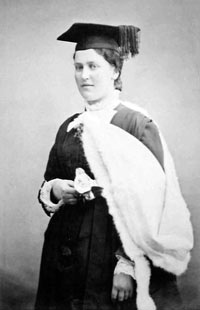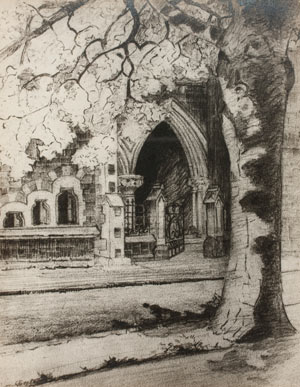Inevitably there were some who would test the limitations placed on students, including the separation of male and female students. Although it may seem innocent today, in 1905 the University authorities were scandalised when, as a capping gag, male students removed the female students’ gowns from the Women’s Cottage, which was supposedly strictly off limits.
The women’s gowns were not the only clothing that concerned the Board. In the early 1900s the College authorities were forced to pass a resolution that “Students will not be allowed to attend lectures at Canterbury College in any but the customary dress.” This rule was put into place specifically so that female students could not wear reform dress to classes.


